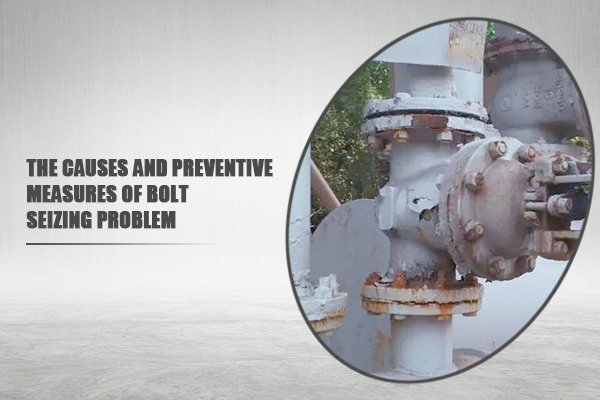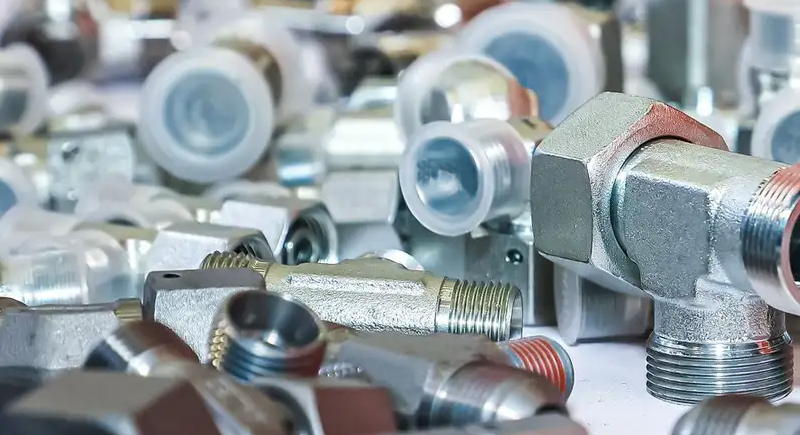VIDEO & CENTER

Screws are known as the "rice of industry" and are the most commonly used standard components in industrial production. However, due to factors such as the environment and human factors, the problem of "screw sticking" can also occur. Screw sticking can lead to increased difficulty in industrial maintenance and a significant decrease in installation efficiency, making it a problem that should be avoided in industrial production. Therefore, this article starts from the causes of screw sticking, analyzes and discusses the handling and prevention measures for screw sticking. Workers should avoid screw sticking at the source during screw installation, thereby effectively improving work efficiency.

In daily life and industrial production, screws are indispensable standard components. From mechanical products to electronic products, from ships, vehicles, water conservancy projects to chemical experiments, from large screws used in engineering, construction, and bridges to precision screws used in digital products, it can be seen that the wide use and convenience of screws are obvious. However, while screws bring convenience to human life, they also bring some problems. The most typical one is screw sticking.
Screw sticking is a phenomenon that occurs during assembly of screws, manifested as the screws sticking together after several assemblies and being difficult to disassemble and tighten. Screw sticking directly affects the maintenance and repair of equipment and may lead to equipment damage and scrapping. In power plants, screw sticking problems occur frequently. This article analyzes and sorts out the causes of screw sticking through these examples, combined with literature, books, etc., and proposes handling measures and experience feedback.
- The Problem of Screw Sticking
During the replacement of the sealing plug screw of the generator end cover in a power plant, it was found that the screw was stuck. The person in charge of the work tried measures such as using rust remover penetration and increasing torque, but after several attempts, no effect was seen. Finally, the person in charge welded a temporary nut on the head of the screw and used increased force to unscrew the screw from the generator end cover. The screw thread was already damaged. The final cause was that due to the narrow space and poor angle during installation, the workers did not install vertically and used brute force to fix the screw on the equipment. As the generator operated for a long time, the screw stuck.
When a staff member of a power plant disassembled and inspected the regulating valve on site, when the screw was screwed to the normal height of the stroke, the screw thread of the screw plug was stuck, and the valve could not be disassembled. Because the inability to disassemble the valve affected the power operation of the on-site equipment, the valve was urgently cut and a new valve was replaced. The removed valve had its screws destructively removed and it was found that the screw was a stainless steel screw, with impurities between the threads and no lubricant was applied during installation, ultimately causing the sticking phenomenon.
Similar problems have occurred in various engineering sites. Due to these screw sticking problems, on-site work has caused great difficulties. Based on the purpose of improving work efficiency, combined with actual on-site experience and consulting relevant literature and books, this article analyzes the causes of screw sticking, proposes handling measures and prevention measures for screw sticking. After the stainless steel bolts are tightened, there is pressure between the threads and heat, which will destroy this oxide layer, causing blockage and shear between the threads, eventually resulting in extremely strong adhesion between the threads. If this adhesion cannot be properly removed, the phenomenon of bolt seizing will occur.
Stainless steel bolts are more prone to seizing compared to carbon steel bolts because when tightening the bolts, the iron filings produced by carbon steel bolts tend to fall off, while for stainless steel bolts, due to their material properties, the iron filings tend to adhere to the bolt surface, leading to seizing.
2.2 Temperature reasons
After the bolts and nuts are tightened, there are two types of stresses: a. The tensile stress caused by the preload; b. The torsional shear force caused by the torque of the threads. During the removal process of the steam turbine air duct of a certain power plant, due to the large size of the air duct's external shape, severe deformation and misalignment occurred, generating strong stress. And the bolts and nuts, due to being in a high-temperature environment for a long time, the threads deform under tensile stress and seize.
Lubricants on the surface of bolts that have been in a high-temperature environment often form a thick oxide layer. The large compressive force between the bolts and nuts will cause the formation of a hard oxide film. High-temperature conditions will lead to a decrease in the hardness of the bolts. If the bolts are not cooled promptly before removal and a large torque is used to remove the bolts, the oxide film will be torn, and burrs will be pulled out on the thread surface, thereby causing the bolts to seize. During the removal of the temporary filter screen of the main steam valve of a certain power plant, due to the lack of timely cooling of the bolts during removal, the thread surface was abraded, thereby causing the bolts to seize.
2.3 Human factors
2.3.1 Before using the bolts and nuts, it is not confirmed whether their mechanical properties meet the requirements. For example, if the strength of the bolts and the safety load of the nuts do not meet the requirements of the working environment, force is blindly applied, and over time, the bolts will seize.
2.3.2 During the removal of the bolts, incorrect heating processes will cause the bolts to expand and seize.
2.3.3 If the force applied to tighten the bolts is not uniform or the direction and angle of the rotation are incorrect, relative inclination between the bolts and nuts will occur, leading to seizing.
2.3.4 The rapid pre-tightening and removal are faster than the slow pre-tightening and removal, and the friction heat cannot be dissipated in time. Under the instantaneous high-temperature condition, the material strength of the thread surface significantly decreases, and severe adhesive wear occurs on the thread surface. In addition, the brittleness of the stainless steel material decreases and its plasticity increases, which will increase the depth of the adhesive node failure.
- Methods for handling bolt seizing
During the installation and maintenance of industrial equipment, bolt seizing is inevitable. Therefore, when such a phenomenon occurs, the solution becomes crucial. Based on experience accumulation, the methods for handling bolt seizing are summarized as follows:
3.1 For bolts prone to rust, rust removers, gasoline or kerosene can be dripped into the threaded connection, and then left to stand for a period of time before removal.
3.2 Use the method of tightening first and then loosening. During removal, first rotate in the tightening direction, then loosen, and repeatedly tighten and loosen. This operation can allow flattening and shearing to occur simultaneously, allowing the rust layer to peel off with the tensile and compressive stress, making it easier to remove.
3.3 Use a hammer to strike around the nut to loosen the threaded connection and achieve the effect of separation.
3.4 For bolts that are directly screwed into equipment with a smaller size and seize during removal. If the space is limited and there is no force point on the bolt head, a temporary nut can be welded on the bolt head to increase the force point for removal.
3.5 For bolts that cannot be removed, only destructive drilling can be used for removal, and then the thread hole can be repaired using a reaming method with a tap.
- Preventive measures for bolt seizing The phenomenon of bolt seizing occurs from time to time. If preventive measures can be taken at the source, the risk of bolt seizing can be minimized.
4.1 When reinstalling the bolts, it is necessary to clean the oxide scale and burrs on the surface of the bolts to ensure the smoothness of the threaded surface.
4.2 Pre-checking the bolts before reinstallation is very important for their installation. During the pre-checking process, it is necessary to ensure that the fit between the bolt and the nut can achieve a state of easy insertion and removal.
4.3 When installing the bolts, they must be perpendicular to the axis and cannot be tilted. During the tightening process, the force should be uniform and not exceed the safe torque.
4.4 In a high-temperature environment, operations must be carried out after the bolts have cooled down. Avoid rapid disassembly and installation to prevent a sudden increase in temperature from causing seizing.
4.5 Before reinstalling the high-temperature bolts, the remaining grease from the previous installation must be cleaned up to avoid solidification and hardening, which could cause damage when the bolt and nut are in contact. After cleaning, new lubricant should be applied for reinstallation.
4.6 When installing the bolts, an appropriate amount of raw material tape can be wound on their surface. This can prevent direct contact between the bolt and the nut and prevent damage to the threads. The lubricating property and non-stick surface of the raw material tape help prevent seizing during the tightening process of the stainless steel bolt. The cold flow property of the raw material tape enables it to undergo plastic deformation under continuous load, and the pressure between the threads can fill the gap between the threads, achieving the tightening effect.
Conclusion This article, based on on-site examples, combined with knowledge from literature and textbooks, analyzes and discusses the causes, handling methods, and preventive measures of bolt seizing. Through the discussion in this article, we hope to provide certain assistance and guidance to the staff during their work, and prevent the occurrence of the phenomenon of bolts getting stuck at the source as much as possible, thereby improving the efficiency of on-site work.














